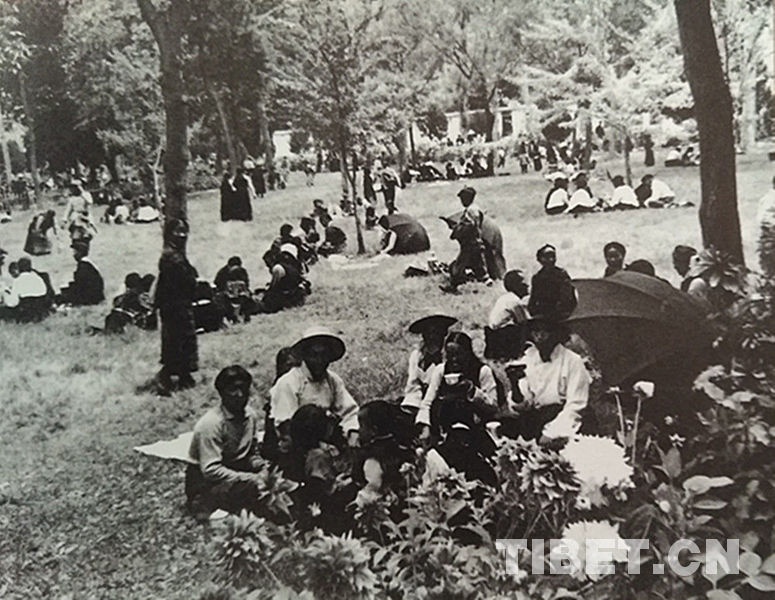How to Plan a Lifetime Mount Gang Rinpoche Tour from Lhasa
Taking a trip to Mount Gang Rinpoche in western Tibet’s Ngari Prefecture is one of the most epic adventures on the plateau. Sitting at an elevation of 6,636 meters above sea level, and more than 1,200 kilometers from Lhasa, Mount Gang Rinpoche is the most sacred mountain in the world, held in reverence by four separate religions. A trip to Mount Gang Rinpoche is an awe-inspiring adventure that stretches out across the Tibetan plateau. And planning such a trip requires you to be on a guided tour with a registered Tibetan travel agency. While you may think that the planning for such an epic journey might be almost impossible, with our help, you really need to do very little, as we will handle most of the details.
Best Route to Mount Gang Rinpoche from Lhasa

Mount Gang Rinpoche
The overland trip to Mount Gang Rinpoche is a journey that takes you from the stunning capital city of the Tibet Autonomous Region (TAR) to one of the most amazing holy destinations on the planet. This awesome yet extreme journey is the best way to travel to the sacred mountain, and there is no better way to reach the farthest western reaches of the plateau than by taking an overland route. Not only do you get to stop at Mount Qomolangma along the way, but you also get to enjoy the amazing scenery of the plateau while you are driving across its vastness.
The trip to Mount Gang Rinpoche from Lhasa is done as part of a 15-day of Tibet Tours, which gives you the first few days in Lhasa to acclimatize and do some sightseeing, before heading off on the road out west. Whilst in Lhasa, you will get to visit the famous and iconic Potala Palace and the sacred Jokhang Temple, as well as some of the most famous monasteries in the capital city.
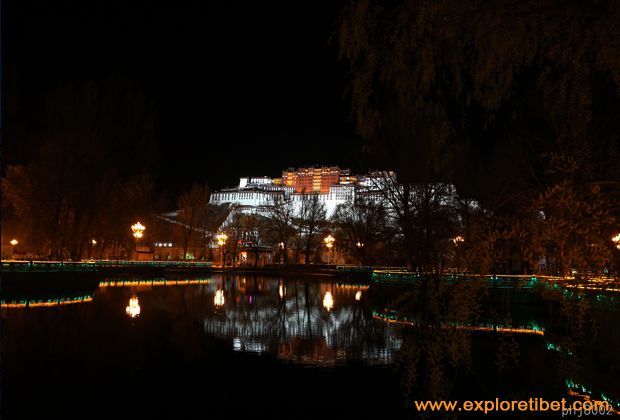
Potala Place
The road out west takes you past Lake Yamdrok, one of the Great Three sacred lakes, and on to Gyantse, where you will stop to visit the Gyantse Pelkor Stupa in Pelkor Chode Monastery. Then you will continue on to Shigatse for the night. Before leaving Shigatse, you will visit the Tashilhunpo Monastery, and then head out through Tingri to visit Mt. Qomolangma Base Camp, where you will stop for the night. The next day you travel back to the G318 Friendship Highway, then take the G219 National Road, which heads northwest to Saga. From there, it is a day’s journey on the Darchen, at the foot of the sacred mountain. Overall, this amazing and epic journey covers a total distance of around 1,672 kilometers.
Best Time to take a Mount Gang Rinpoche Tour
Much as the summer months are the main period of the peak season in Tibetan tourism, the best time to take Tibet Mount Gang Rinpoche tour in western Tibet is normally in the spring and autumn. Spring, from April to June, and autumn, from mid-September to the end of October, is when the weather is at its best for trekking around the sacred mountain.
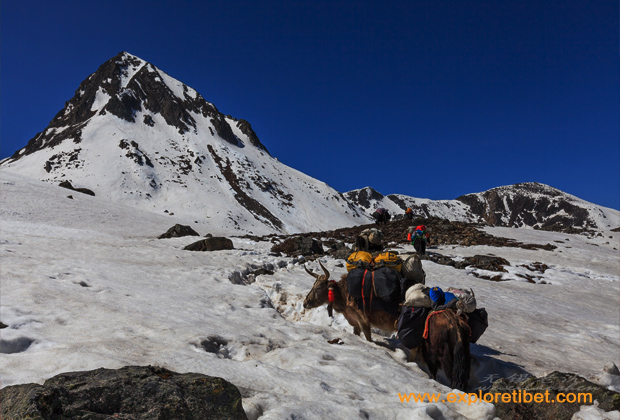
Tibet Trekking
Dry weather, clear skies, and almost no rain at all means that you have the best weather possible for hiking around the sacred kora route. While it may be a little colder, it is better than the muddy terrain that comes with the summer monsoon season. And in the winter, the whole area is covered with snow, making the trek untenable.
Travel Permits
For the epic adventure to Mount Gang Rinpoche, there are certain Travel permits that are required for you to reach the sacred mountain and take the trek around it. All tourists heading for Tibet, and especially Mount Gang Rinpoche, are required to be on a re-arranged tour of the plateau region, complete with private tour guide, driver, and private vehicle. The permits that you require for the trip to the sacred mountain are then applied for by us, on your behalf. Personal applications for these permits is not permitted, and they are only issued on proof of a booked tour.
The permits you need for the trip to Mount Gang Rinpoche are:
Tibet Travel Permit (TTP) – This is required for entry to Tibet and to travel around in the area of Lhasa. The permit is applied for using a scanned copy of your passport and Chinese Entry Visa.
Alien’s Travel Permit (ATP) – Required for travel to the “unopened” areas of Tibet outside Lhasa, including Shigatse. The permit is applied for using your original passport and TTP once you arrive in Lhasa.
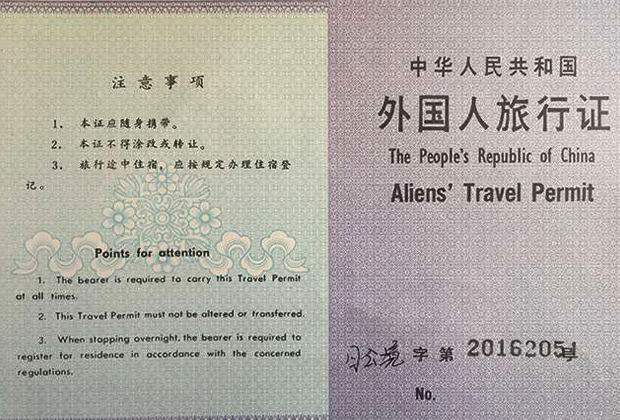
Aliens' Travel Permits
Restricted Areas Permit – This is often called the “Military Permit”, and is required for travel to military-sensitive areas such as Ngari, Nyingchi, etc. The permit is applied for in advance of your trip, and can take up to ten days to be approved.
Frontier Pass – While most tours will not actually cross the border out of China, the Frontier Pass is required for all tourists traveling in the areas of the Chinese border with India, Nepal, and Bhutan, which includes Mount Qomolangma and Mount Gang Rinpoche. The pass is obtained in Lhasa before you leave the capital city.
Mt. Qomolangma National Park Pass – Obtained prior to leaving Shigatse for Mt. Qomolangma Base Camp, the pass is checked before you can enter the Qomolangma National Nature Reserve area around Mount Qomolangma.
Packing List for Mount Gang Rinpoche
While the list of clothes and gear that you will need is essentially up to you, there are a few things that you will need to make sure that you include in your packing, which you will find that you need along the route around the sacred mountain.
Clothes and Trekking Gear
The weather is colder around the mountain, and it is the best to bring layers of t-shirts or trekking tops to keep warm. You can remove or add layers, depending on how cold or hot you get. And cover the layers with a light fleece sweater to keep your body heat inside. It is also essential to bring along a fleece or down jacket for the colder periods, such as when you stop or for the evenings. Hiking pants are the best option for this climate, but if you do not have them, go for track pants or light slacks, rather than jeans, which are heavy to hike in.
You will need a good arctic-rated sleeping bag, as the weather can get cold at night. And bring along some high SPF sun block to keep your skin from burning in the intense sunlight. And remember to bring gloves, a warm hat, trekking poles (if you feel you need them to help maintain a sure footing), sunglasses, and a small backpack for the daytime hiking.
Medicine and Personal Items
You will need to make sure that you have all the personal medications that you need, especially if you are on medication prescribed by your own doctor. A first aid kit can be useful, and should include the standard bandages and Band-Aids, alcohol, iodine, anti-septic creams, painkillers (ibuprofen or paracetamol), and nausea tablets. These can help with the symptoms of altitude sickness.
Tibet Stories
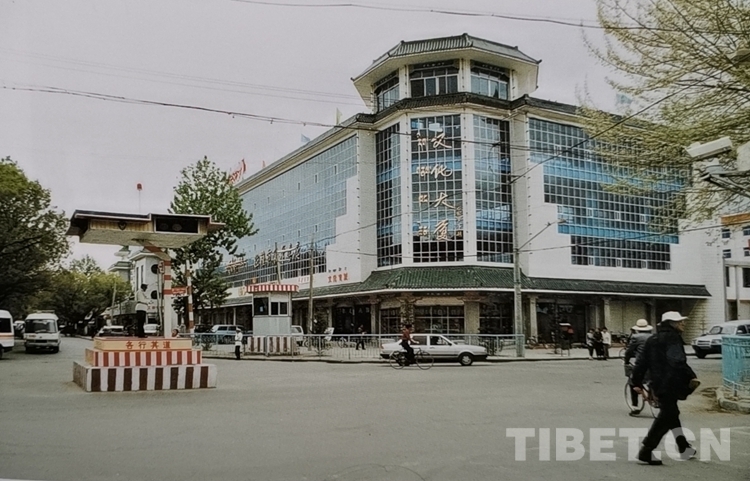
70 Years on: Drawing the newest, most beautiful blueprint on Tibetan Plateau
There have been three construction surges in Tibet in the last century.

